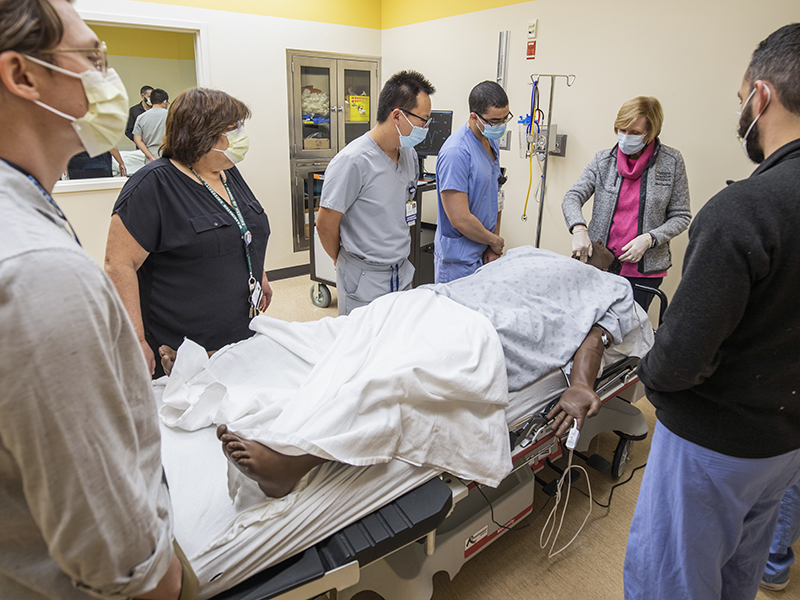During his second year of training, Anurag Chahal, MD, witnessed a patient have a severe reaction to a contrast agent. “The tech walked in and said, ‘I don’t think this patient is doing too good after contrast,’” says Chahal, a current fourth-year diagnostic radiology resident.
By the time Chahal and attending physician Cary L. Siegel, MD, entered the room, the patient was hypotensive and gasping for air. Siegel mentored Chahal to administer epinephrine within a minute of arrival, saving the patient’s life. Chahal says he was amazed at how quickly Siegel turned the situation around, which sparked a realization: “If someone like me — who’s had radiology training and completed high-fidelity simulations — doesn’t have the structured approach to save someone’s life, how can you expect someone without that training to be at their A-game when something like this happens?”
While mild allergic reactions such as nausea and itching aren’t uncommon, the likelihood of a patient having a life-threatening reaction is rare. That alarming moment inspired Chahal to create a hands-on contrast simulation training to better equip residents to handle those rare but serious events. He pitched his idea to Siegel, professor of radiology, who recognized the value in developing the simulation program.
“There are a couple of reasons why it’s really important that we’re doing this,” Siegel says. “Residency requirements have increased in terms of educational training and emergency management training for contrast. And we’re doing more scanning in the evenings and on the weekends when the residents are there with less staff, so they’re going to be called on more often to play a pivotal role.”
Chahal began connecting with peers at other institutions to discuss their contrast reaction training models, designing simulation scenarios, and coordinating with the staff at the Wood Simulation Center in the Farrell Learning and Teaching Center to set up the simulation sessions. Each session is a one-hour, high-fidelity simulation with four trainees tending to a life-size mannequin. A proctor manipulates the mannequin’s symptoms, vital signs and dialogue to mirror real-life contrast reaction scenarios.
Siegel organized the initial sessions while training other proctors. Over the past nine months, interest in the simulations has grown tremendously from both trainees and attendings who want to be proctors. The current roster has eight proctors, one from each clinical section.
The team is currently averaging three contrast simulation training sessions a month. Moving forward, they plan to hold the trainings annually and ensure each proctor covers the same learning points.
Siegel says this journey shows that residents at MIR have the opportunity to come up with an idea and take it to absolute fruition. “Anurag wrote all the programs. He made contact with the simulation center. He got the introductions. It was collaborative, with faculty members contributing to improve the experience,” she says. “But he’s the one who had the vision.”
“I just realized that this is an area that we can improve as far as patient safety is concerned,” Chahal says. “And I became passionate about it because I was part of the team that saved a patient’s life.”
Published in Focal Spot Spring/Summer 2023 Issue

